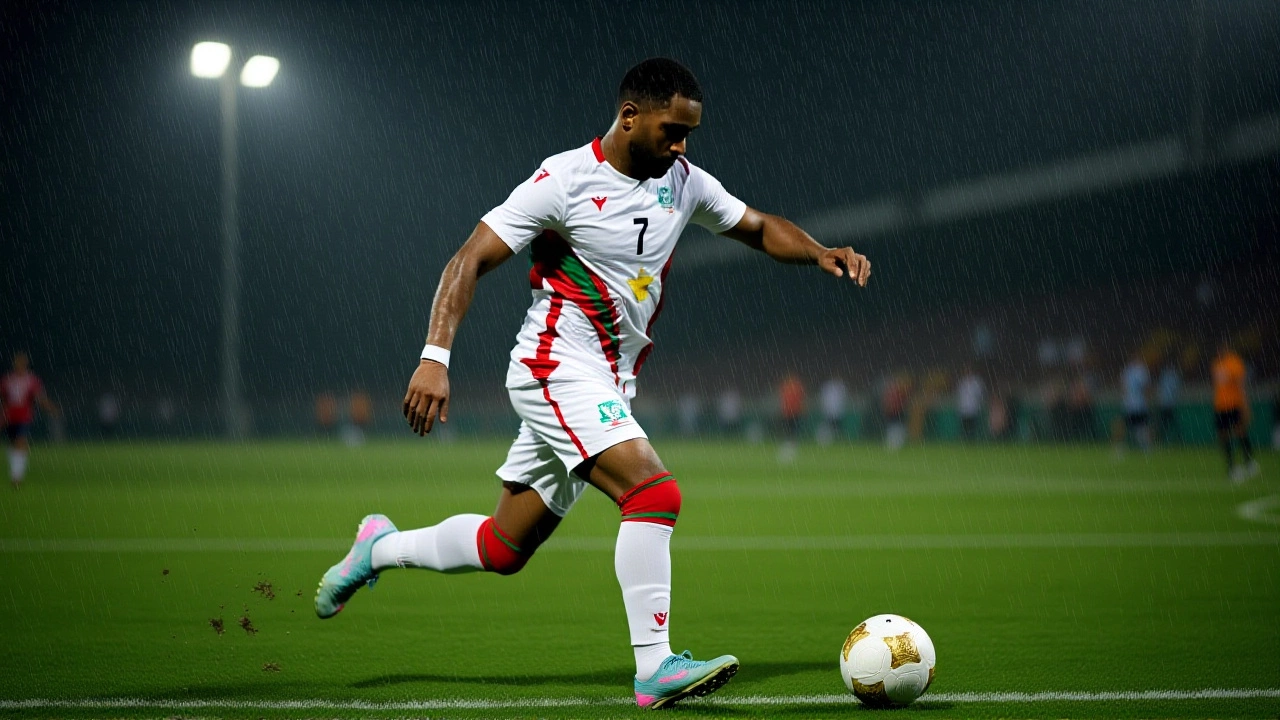Guatemala Ends World Cup Quest with 3-1 Win as Suriname Advances on Goal Difference

- Nov, 20 2025
- 0 Comments
- Xander Westbrook
Guatemala celebrated a hard-fought 3-1 victory over Suriname on the final matchday of CONCACAF’s 2026 FIFA World Cup qualifiers, but the celebration was bittersweet. Played on November 18, 2025 at Estadio Manuel Felipe Carrera in Guatemala City, the win sealed a respectable third-place finish for Guatemala — yet it was Suriname, the loser, who walked away with a ticket to the FIFA Intercontinental Play-Off Tournament. The twist? Suriname advanced despite the defeat, thanks to a superior goal difference. For Guatemala, it was the end of a campaign that came agonizingly close. For Suriname, it was a miracle of math — and a lifeline to the world’s biggest stage.
How Suriname Moved On — Even in Defeat
It’s rare in football for a team to qualify after losing. But that’s exactly what happened. Suriname entered the match with nine points from five games, one ahead of Guatemala. A win would’ve guaranteed second place. A draw would’ve kept them alive. A loss? Only if goal difference favored them — and it did. With a +3 goal difference compared to Guatemala’s +1, Suriname clinched the final second-place spot in CONCACAF Group A. The FIFA and CONCACAF official reports confirmed it: Suriname’s 9 points and +3 goal difference edged out Guatemala’s 8 points and +1. The own goal by Nicolás Samayoa in the 93rd minute — a deflection off Sheraldo Becker’s cross — didn’t change the outcome. It just made it more dramatic.
Guatemala’s Goals, But No Group Win
On the pitch, Guatemala played with urgency. Darwin Lom opened the scoring in the 49th minute with a powerful header from Óscar Santis’s cross. Then came Olger Escobar — left-footed, clinical — doubling the lead in the 57th minute. Santis completed the scoring in the 65th minute, finishing a lightning-fast counterattack after Suriname’s defense lost shape. The Federación Nacional de Fútbol de Guatemala’s head coach, Luis Fernando Tena, had deployed a 4-2-3-1 with precision. Héctor Hagen anchored the backline, while midfielders José Rosales and José Morales controlled tempo. Suriname, under Dean Gorré, pressed high and won possession 55% of the time, but couldn’t convert chances. They had nine shots — only three on target. Guatemala’s 11 shots, five on target, were more efficient. The match ended 3-1, but the scoreboard didn’t tell the whole story.
The Numbers Behind the Drama
Group A’s final standings were tight — and brutal. Panama topped the group with 12 points (3-3-0), qualifying directly for the 2026 FIFA World Cup. Suriname, despite the loss, finished second with 9 points (2-3-1). Guatemala, with a 2-2-2 record, ended on 8 points. El Salvador, winless in five matches, collapsed with just 3 points. Goal difference was the decider. Suriname had scored 10 and conceded 7. Guatemala scored 10 too — but conceded 9. That one extra goal conceded, in a tournament where every inch matters, made the difference. ESPN’s stats showed Suriname dominated possession, but Guatemala’s defense held firm until the final minutes. The own goal was a cruel twist — Samayoa, a central defender who had played every minute of the qualifiers, accidentally sent the ball past his own keeper in stoppage time. It was symbolic: a moment of chaos that sealed the fate of both teams.
What This Means for the Future
Suriname’s advancement is historic. This is the first time the Surinaams Elftal has reached the FIFA Intercontinental Play-Off Tournament. They’ll face a team from another confederation — likely from Asia, Africa, or Oceania — in March 2026. A win there means a spot in the 2026 FIFA World Cup. For Guatemala, the road ends here. Their last World Cup appearance was in 1988 — a 37-year drought. They finished third in their group for the second consecutive cycle. The frustration is palpable. Fans in Guatemala City cheered the win, but many left the stadium silent. The team didn’t lack heart. They lacked the margin for error.

A New Era for Caribbean Football
Suriname’s qualification isn’t just luck. It’s the product of years of rebuilding. Their federation invested in youth academies, brought in Dutch-trained coaches, and embraced a more technical style. Players like Becker, who nearly single-handedly kept their hopes alive, are products of that system. Guatemala, meanwhile, has struggled with instability — four coaches in six years, inconsistent squad selection, and a lack of top-tier domestic league support. The contrast couldn’t be starker. Suriname, with a population under 600,000, now has a chance to play on the world’s biggest stage. Guatemala, with over 18 million people, must start from scratch again.
What’s Next?
Suriname will prepare for the March 2026 play-off, likely against a team from Asia or Africa. The draw will happen in December. Guatemala’s federation has already begun internal reviews. Coach Tena’s contract expires after the qualifiers — his future is uncertain. The Federación Nacional de Fútbol de Guatemala has promised a long-term strategy, but fans are skeptical. Meanwhile, the Estadio Manuel Felipe Carrera — home to Comunicaciones FC — will host more international matches, but for now, it’s a monument to near-misses.
Frequently Asked Questions
How did Suriname advance despite losing the match?
Suriname finished second in Group A with 9 points and a +3 goal difference, just ahead of Guatemala’s 8 points and +1 goal difference. Even though they lost 3-1, their previous results — including a 2-1 win over El Salvador and a 1-0 win over Panama — gave them the edge. CONCACAF rules prioritize goal difference over head-to-head results when teams are tied on points, and Suriname’s superior defensive record across all six matches made the difference.
Why didn’t Guatemala qualify even though they won their final match?
Guatemala needed to win by at least two goals and hope Suriname lost by more than one to overtake them on goal difference. Instead, Suriname’s earlier results gave them a cushion. Guatemala’s 3-1 win improved their goal difference from 0 to +1, but it wasn’t enough. Suriname’s +3 was too strong. It’s a reminder that in World Cup qualifying, consistency matters more than one big win.
Who are Suriname’s potential opponents in the intercontinental play-off?
Suriname will face the runner-up from either Asia (AFC), Africa (CAF), or Oceania (OFC), depending on the final standings. The draw is scheduled for December 2025. Historically, CONCACAF’s second-place teams have faced strong opponents — like Australia or Jordan in past cycles. Suriname’s best chance may lie against a lower-ranked AFC side, but they’ll need to be at their peak to win.
Has Suriname ever reached the World Cup before?
No. This is Suriname’s first time advancing to the intercontinental play-offs. They’ve attempted qualification since the 1970s, but never made it past the group stage. Their 2025 campaign — led by Dutch-Surinamese players and a tactical overhaul — marks a turning point. If they win in March, they’ll become the smallest nation ever to qualify for the World Cup by population.
What does this mean for Guatemala’s future in CONCACAF?
Guatemala’s third-place finish is their best result since 2017, but it’s still not enough. The federation faces pressure to overhaul youth development and stabilize coaching. With Panama and Canada rising in the region, Guatemala risks falling further behind. Fans are calling for a new national league structure and investment in grassroots football. Without systemic change, another 37-year wait could be coming.